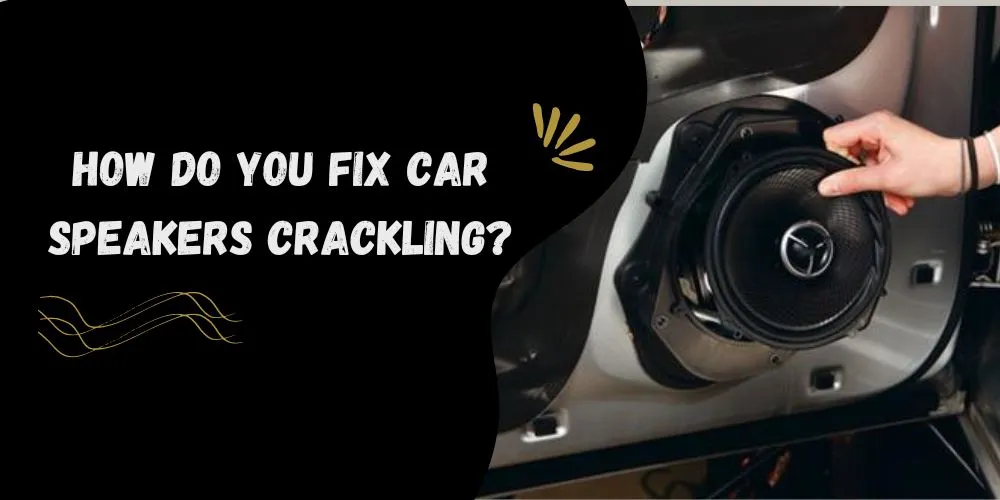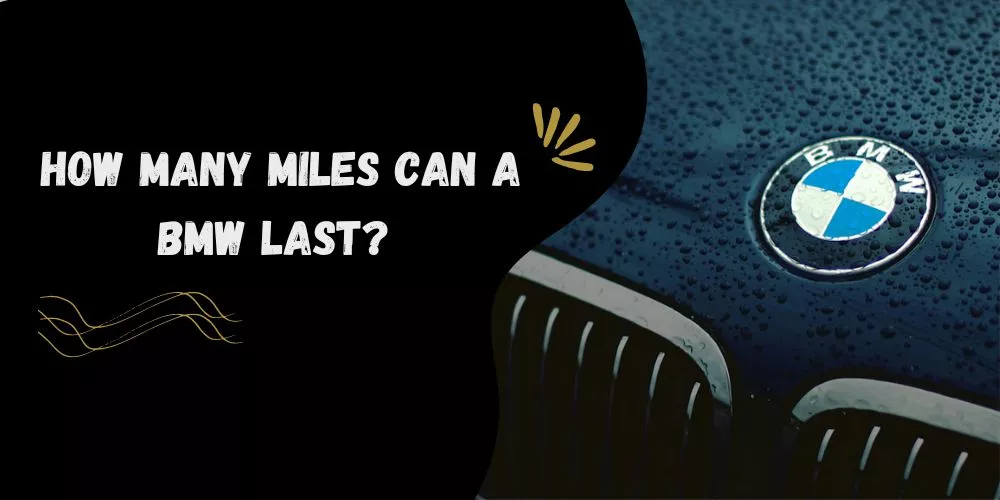Embarking in a car is more than just reaching a destination; it’s an experience that encompasses the essence of travel, adventure, and self-discovery.
In this article, we will explain what does a trip mean in a car, while exploring the nuances that make it a unique and memorable experience.
From the rhythm of the open road to the unexpected encounters along the way, we will uncover the true meaning of a car trip and how it transcends the mere act of getting from point A to point B.
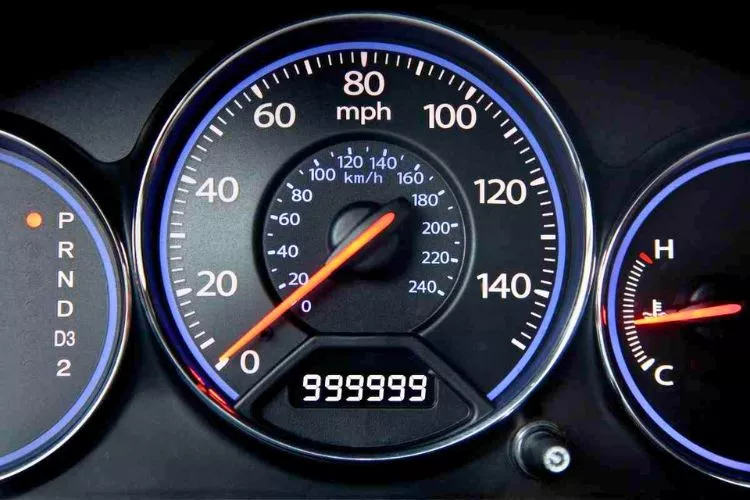
Join us as we embark on this exciting journey, and discover the magic within the simple pleasure of a car trip.
Contents
What does a trip mean in a car?
A trip in a car refers to a journey taken using an automobile, usually for leisure, exploration, or reaching a specific destination. It involves traveling on roads and highways, encompassing various distances and durations.
Car trips provide an opportunity to experience diverse landscapes, cultures, and attractions.
They offer flexibility and personalization, allowing travelers to tailor their experience to their preferences and interests. Ultimately, a car trip signifies a mode of travel that combines convenience, adventure, and the freedom to explore at one’s own pace.
What Does Trip A Mean on a Car?
Trip A is a feature on a car’s odometer that tracks the distance traveled for a specific journey, such as the number of miles driven between each fill-up. It helps calculate fuel economy and monitor driving patterns.
Most vehicles also have a Trip B feature, allowing drivers to log two trips on their odometer.
What Does Trip B Mean on a Car?
Trip A on a car’s odometer indicates the distance traveled for a specific journey, such as the miles driven between each fill-up. This feature helps drivers calculate fuel economy and monitor driving patterns. Most vehicles also have a Trip B feature, allowing them to track two journeys on the odometer.
Difference Between Trip Meter A and B
Trip meters A and B are features on a car’s odometer that allow drivers to track the distance traveled for separate journeys. Though they function similarly, they serve different purposes, offering versatility in monitoring various aspects of driving.
Here, we delve into the key differences between trip meters A and B:
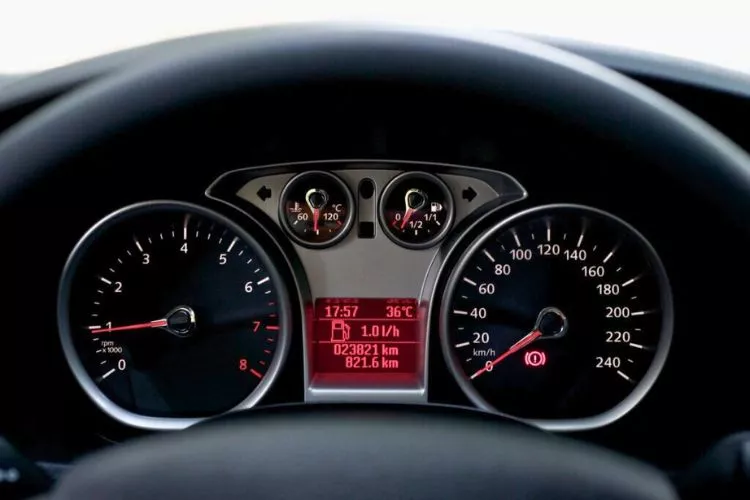
Trip Meter A:
- Trip meter A typically tracks shorter or more frequent journeys, such as daily commutes, errands, or short road trips.
- It can help calculate fuel economy over a specific period, enabling drivers to monitor their vehicle’s efficiency and adjust their driving habits accordingly.
- Drivers may reset trip meter A more frequently than trip meter B, allowing them to track different aspects of their driving in a shorter time frame.
Trip Meter B:
- Trip meter B is often used to track longer or less frequent journeys, such as road trips, vacations, or extended travel.
- It provides a way to monitor cumulative mileage over an extended period, which can be useful for planning vehicle maintenance or budgeting fuel expenses.
- Trip meter B may be reset less frequently than trip meter A, allowing drivers to track their driving patterns over a longer duration.
In summary, trip meters A and B are useful for drivers to monitor their driving habits and vehicle efficiency. While trip meter A is generally used for shorter, more frequent journeys, trip meter B is better suited for longer, less frequent trips.
By utilizing both trip meters, drivers can better understand their vehicle’s performance and make informed decisions about fuel consumption and maintenance.
How to use a trip meter in car?
A trip meter, also known as an odometer or trip odometer, is a useful feature in many cars that allows you to track the distance traveled during a specific journey or trip.
It can help monitor fuel efficiency, track the distance covered on a road trip, or calculate the distance between two points. This guide will provide you with detailed instructions on how to use the trip meter in your car.
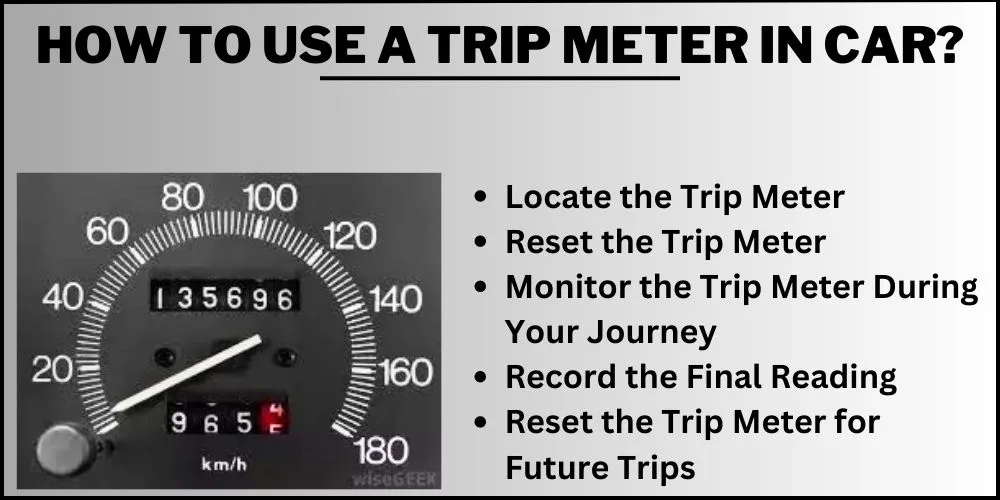
Locate the Trip Meter
The first step is to locate the trip meter in your car. It is usually found near the speedometer and fuel gauge on the dashboard. In some cars, it may be a digital display; in others, it may be a mechanical counter with rolling numbers. The trip meter is often labeled “Trip A” or “Trip B.”
Reset the Trip Meter
Before starting your journey, resetting the trip meter to zero is essential. This will ensure that you only measure the distance traveled during your specific trip. To reset the trip meter, follow these steps:
- Turn on the ignition: Ensure your car is turned on, but you don’t need to start the engine.
- Locate the reset button: Find the reset button or switch, which is typically located near the trip meter display. This button may be on the steering wheel or the dashboard in some cars.
- Press and hold the reset button: Press and hold the reset button for a few seconds until the trip meter resets to zero. In some cars, you may need to press the button multiple times to cycle through different trip meter options (e.g., Trip A, Trip B) and then reset the desired trip meter.
Monitor the Trip Meter During Your Journey
As you drive, the trip meter will continuously track the distance you have traveled. You can monitor the trip meter to keep track of your progress, fuel efficiency, or any other purpose you have in mind.
Record the Final Reading
When you reach your destination or complete your journey, take note of the final trip meter reading. This will give you the total distance traveled during your trip. If you need to calculate fuel efficiency, you can use this information along with the fuel consumed during the trip.
Reset the Trip Meter for Future Trips
Once you have recorded the final reading, don’t forget to reset the trip meter again in preparation for your next journey. This will ensure that you always have an accurate measurement of the distance traveled during each trip.
In summary, using the trip meter in your car is a simple yet valuable tool for tracking the distance covered during your journeys.
By locating the trip meter, resetting it before each trip, and monitoring the distance traveled, you can effectively use this feature to improve your driving experience and gather useful information about your car’s performance.
How Do You Turn Off a Car Trip Function?
The car trip function, also known as the trip meter or trip odometer, is a useful feature that helps you track the distance traveled during a specific journey.
However, there may be instances when you want to turn off this function to avoid distraction or simply because you don’t need it. This guide will provide detailed instructions on how to turn off the car trip function.
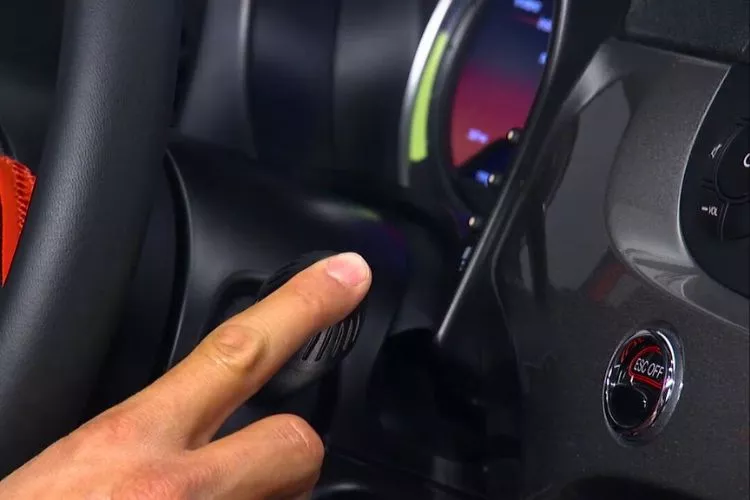
Locate the Trip Meter Controls
The first step in turning off the car trip function is locating the trip meter’s associated controls. These controls are typically found near the speedometer and fuel gauge on the dashboard. These controls may be on the steering wheel or within the digital menu system in some cars. The trip meter is often labeled “Trip A” or “Trip B.”
Check Your Car’s Manual
Since turning off the trip function can vary depending on the make and model of your car, it’s always a good idea to consult your car’s manual for specific instructions. The manual will provide detailed information on how to disable or turn off your vehicle’s trip function.
Turning Off the Trip Function
In some cars, turning off the trip function may not be possible. Instead, you can reset the trip meter to zero, which effectively disables the distance tracking for that particular trip. However, for cars that do allow you to turn off the trip function, follow these general steps:
- Turn on the ignition: Ensure your car is turned on, but you don’t need to start the engine.
- Locate the trip meter controls: Find the button, switch, or menu option that controls the trip meter function.
- Access the trip meter settings: Press the button, switch, or navigate through the menu options to access the trip meter settings.
- Turn off the trip function: Look for an option to disable or turn off the trip meter. This may involve selecting “Off” or unchecking a box next to the trip meter function. In some cars, you may need to press and hold the trip meter button for a few seconds to turn off the function.
Alternative: Reset the Trip Meter
If your car does not have the option to turn off the trip function, you can reset the trip meter to zero instead. This will stop the tracking of distance for the current trip. To reset the trip meter, follow these steps:
- Turn on the ignition: Ensure your car is turned on, but you don’t need to start the engine.
- Locate the reset button: Find the reset button or switch, which is typically located near the trip meter display. This button may be on the steering wheel or the dashboard in some cars.
- Press and hold the reset button: Press and hold the reset button for a few seconds until the trip meter resets to zero. In some cars, you may need to press the button multiple times to cycle through different trip meter options (e.g., Trip A, Trip B) and then reset the desired trip meter.
In summary, turning off the car trip function may not always be possible, but you can reset the trip meter to zero as an alternative. You can effectively disable the trip function when needed by locating the trip meter controls, consulting your car’s manual, and following the appropriate steps.
How to reset Trip A and trip B?
- Turn on the ignition: Ensure your car is turned on, but you don’t need to start the engine.
- Locate the trip meter controls: Find the button, switch, or menu option that controls the trip meter function, typically located near the speedometer and fuel gauge. These controls may be on the steering wheel or within the digital menu system in some cars.
- Access Trip A settings: Press the trip meter button or navigate through the menu options to access Trip A. The trip meter display should now show the current reading for Trip A.
- Reset Trip A: Press and hold the reset button or switch for a few seconds until the Trip A reading resets to zero. In some cars, you may need to press the button multiple times to cycle through different trip meter options and then reset Trip A.
- Access Trip B settings: Press the trip meter button or navigate through the menu options again to access Trip B. The trip meter display should now show the current reading for Trip B.
- Reset Trip B: Press and hold the reset button or switch for a few seconds until the Trip B reading resets to zero. In some cars, you may need to press the button multiple times to cycle through different trip meter options and then reset Trip B.
- Confirm the reset: Check the trip meter display to ensure that Trip A and Trip B have been reset to zero.
- Resume driving: With Trip A and Trip B reset, you can now continue driving and accurately track the distance for your new journeys.
Does Every Car Have a Car Trip Odometer?
Yes, most cars have a car trip odometer, which allows drivers to track the distance traveled during a specific journey or trip. The trip odometer is typically found on the dashboard, near the speedometer and fuel gauge, and is often labeled as “Trip A” or “Trip B”.
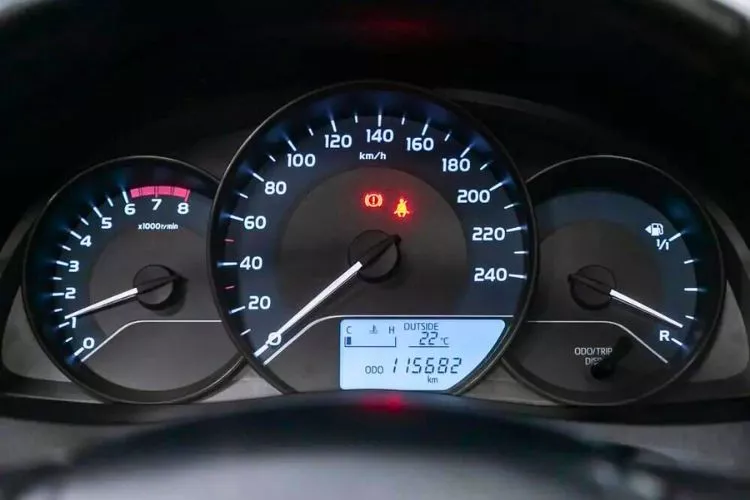
Conclusion:
In conclusion, a trip in a car refers to using a trip odometer, a valuable feature that tracks the distance traveled during a specific journey or trip. This tool, often labeled “Trip A” or “Trip B,” is typically found on the dashboard near the speedometer and fuel gauge.
Using the trip odometer, drivers can monitor fuel efficiency, track the distance covered on road trips, or calculate the distance between two points.
With a better understanding of what a trip means in a car, drivers can effectively utilize this feature to enhance their driving experience and gather useful information about their vehicle’s performance.

